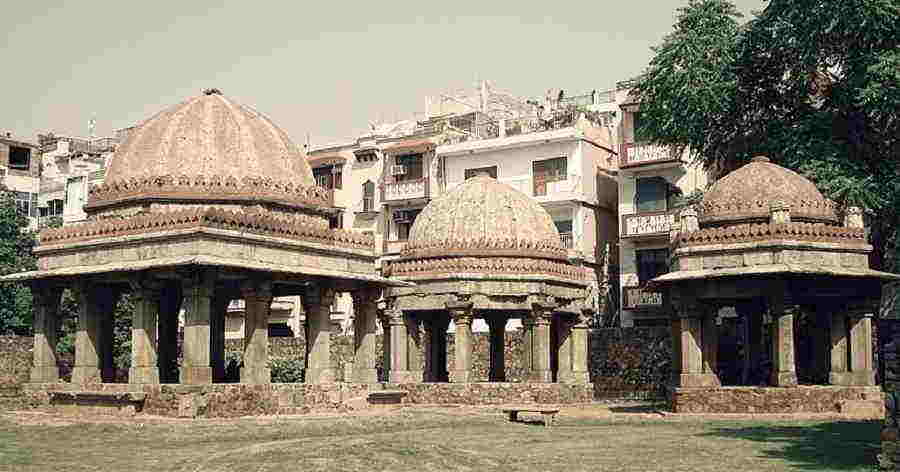

Indo-Islamic architecture is a captivating fusion of Islamic and Indian architectural styles that flourished in the Indian subcontinent from the 12th to the 18th century. This distinctive form of architecture reflects the cultural and artistic synthesis that occurred as Islam spread to the region. Here are some characteristic features of Indo-Islamic architecture:
Architectural Blend: Indo-Islamic architecture seamlessly combines Islamic principles with indigenous Indian architectural elements. This blend resulted in a unique and eclectic style that incorporated both geometric Islamic designs and the organic motifs of Indian art.
Use of Arches: Arches, particularly the pointed arch, are a prominent feature of Indo-Islamic architecture. They are used in doorways, windows, and as structural elements in buildings. The pointed arch is an iconic feature of Islamic architecture.
Majestic Domes: Indo-Islamic architecture is known for its magnificent domes. These domes often feature intricate calligraphy and geometric patterns, and they are used to crown important buildings, such as mosques and tombs. The Taj Mahal, for instance, boasts an iconic dome.
Minarets: Tall, slender minarets are a defining feature of Indo-Islamic architecture. They serve both functional and aesthetic purposes, providing a place for the call to prayer (adhān) and adding to the grandeur of the building.
Courtyard Design: Many Indo-Islamic structures feature central courtyards, which are typical of Indian architecture. These courtyards often include gardens and water features, creating a sense of tranquility.
Intricate Ornamentation: Indo-Islamic architecture is renowned for its intricate ornamentation. This includes delicate stucco work, tile mosaics, and detailed calligraphy. These decorative elements adorn both the interior and exterior of buildings.
Jali Screens: Jali screens are latticed screens made of stone or wood, often featuring geometric patterns or floral motifs. They are used to filter light and provide privacy in buildings like mosques.
Use of Calligraphy: Arabic calligraphy, featuring verses from the Quran or other Islamic inscriptions, is a common decorative element in Indo-Islamic architecture. It is used to adorn domes, arches, and walls.
Courageous Use of Space: Indo-Islamic architects were known for their creative use of space. This is evident in the construction of expansive prayer halls in mosques and the use of symmetrical layouts in mausoleums.
Innovative Structural Techniques: Indo-Islamic architects developed innovative structural techniques to create large, open spaces with minimal use of columns. This allowed for vast, uninterrupted prayer halls in mosques and grand interior spaces in palaces and tombs.
Indo-Islamic architecture is a testament to the rich cultural interchange between India and the Islamic world. It embodies the spirit of artistic exploration and synthesis, resulting in some of the world's most breathtaking architectural marvels.
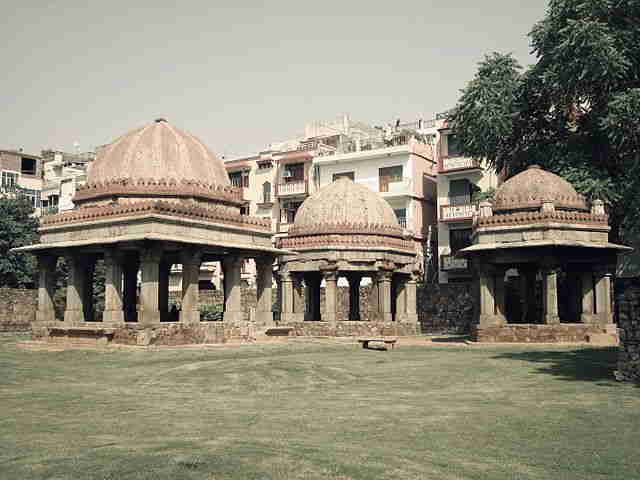
Indo-Islamic architecture is a rich and diverse architectural style that emerged in the Indian subcontinent, blending Islamic and indigenous Indian architectural traditions. This style flourished from the 12th century onwards, with significant contributions from various dynasties and regions. Here are some of the prominent styles of Indo-Islamic architecture:
Early Indo-Islamic Architecture: The Ghurid and Ghaznavid dynasties played a crucial role in introducing Islamic architectural elements to the Indian subcontinent. One of the earliest examples is the Qutb Complex in Delhi, which includes the Qutb Minar, an iconic Indo-Islamic monument.
Mughal Architecture: The Mughal Empire left an indelible mark on Indian architecture. Prominent Mughal architectural features include the use of white marble, large central domes, intricate geometric and floral patterns, and symmetrical garden layouts. The Taj Mahal in Agra, built by Emperor Shah Jahan, is the most famous example of Mughal architecture.
Indo-Saracenic Architecture: This style developed during the British colonial period and represents a fusion of Islamic, Indian, and Western architectural elements. It can be seen in buildings like the Victoria Memorial in Kolkata and the Gateway of India in Mumbai.
Deccani Architecture: In the Deccan region, Islamic architecture developed its unique style, marked by the use of arches, domes, and minarets. The Gol Gumbaz in Bijapur is a prime example, known for its massive dome and unique whispering gallery.
Bengal Sultanate Architecture: Bengal developed its style of Islamic architecture during the medieval period. Mosques like the Sixty Dome Mosque (Shaṭ Gombuj Moshjid) in Bagerhat, Bangladesh, exhibit unique architectural features.
Gujarati Architecture: Gujarat has a distinctive Islamic architectural style, characterized by intricate stone carving and latticework. The Sidi Saiyyed Mosque in Ahmedabad is a notable example.
Kashmiri Architecture: In Kashmir, Islamic architecture incorporates indigenous wooden architectural traditions, intricate calligraphy, and sloping roofs. The Shah Hamdan's Mosque in Srinagar is a fine illustration.
Rajput and Islamic Syncretic Architecture: In regions where Islamic and Hindu cultures coexisted, a syncretic architectural style emerged. The Adhai Din Ka Jhonpra in Ajmer, Rajasthan, blends Islamic architecture within a Hindu temple complex.
Sikh and Punjabi Architecture: Sikh gurudwaras in Punjab, such as the Golden Temple in Amritsar, exhibit a unique blend of Islamic and Punjabi architectural elements.
These various styles reflect the cultural, historical, and regional diversity of the Indian subcontinent. Indo-Islamic architecture is a testament to the harmonious coexistence of different cultures and traditions, resulting in the creation of some of the world's most magnificent architectural wonders.
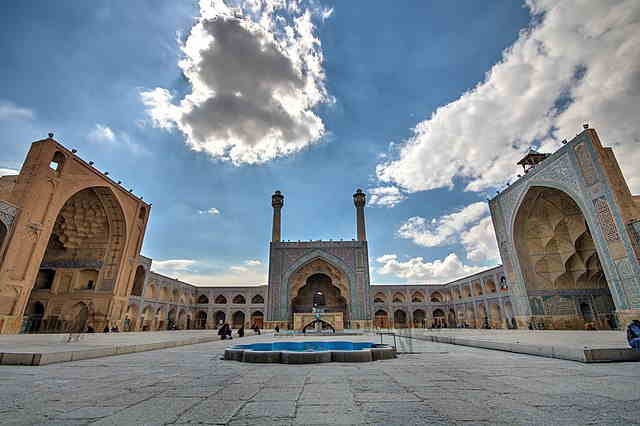
Indo-Islamic architecture in the Indian subcontinent encompasses a wide range of building types, each with its unique characteristics and purposes. These buildings reflect the fusion of Islamic and indigenous architectural styles, resulting in a diverse and rich architectural heritage. Here are some of the prominent types of buildings within Indo-Islamic architecture:
Mosques (Masjid): Mosques are among the most iconic structures in Indo-Islamic architecture. They typically feature a central prayer hall with a mihrab (prayer niche) that indicates the direction of Mecca, a minbar (pulpit), and a courtyard. Prominent examples include the Jama Masjid in Delhi and the Badshahi Mosque in Lahore.
Tombs (Maqbara): Tombs are important in Islamic architecture, and they come in various forms. The central feature is often a dome, and they can range from simple to elaborate. The Taj Mahal in Agra, built by Emperor Shah Jahan, is a world-renowned example of a Mughal tomb.
Palaces (Mahal or Qasr): Palaces were built for royalty and feature opulent architecture, including courtyards, ornate facades, and intricate interiors. The Red Fort in Delhi and the City Palace in Jaipur are prime examples.
Forts (Qila): Forts were essential for defense and governance. They typically include high walls, bastions, gates, and sometimes palaces. The Agra Fort and the Golconda Fort in Hyderabad are notable examples.
Minarets (Minar): Minarets are tall towers, often attached to mosques, from which the call to prayer (adhan) is made. They can be elaborately designed with intricate calligraphy and geometric patterns. The Qutb Minar in Delhi is a famous minaret.
Dargahs and Shrines: Dargahs are shrines built to honor Sufi saints. They are places of pilgrimage and often include courtyards, tombs, and intricate stone or marble work. The Ajmer Sharif Dargah in Rajasthan is a prominent example.
Caravanserais (Sarai): Caravanserais were roadside inns for travelers and traders. They typically had a central courtyard surrounded by rooms for resting and storage. The Hiran Minar in Fatehpur Sikri served as a caravanserai.
Stepwells (Baoli or Vav): Stepwells are unique to the Indian subcontinent and served as water storage and access points. They have elaborate, intricate staircases leading down to the water source. The Rani Ki Vav in Gujarat is a UNESCO World Heritage Site.
Havelis: Havelis are traditional Indian mansions with courtyards and intricate architecture. Some havelis have elements of Islamic design, such as the Patwon Ki Haveli in Jaisalmer.
Bazaars (Bazaar or Souq): Bazaars were bustling marketplaces, often located near mosques or other significant structures. The architecture included covered arcades and stalls. Chandni Chowk in Delhi is a historic example.
Gateways (Darwaza): Gateways served as entrances to cities or important complexes. They often featured grand architecture, such as the Buland Darwaza in Fatehpur Sikri.
Mausoleums (Dargah or Mazar): Mausoleums are similar to tombs but may house the remains of religious figures or revered individuals. They often have domes and intricate stonework. The Sidi Saiyyed Mosque and the Sarkhej Roza in Ahmedabad have mausoleums.
Gardens (Bagh or Charbagh): Gardens were an integral part of Mughal architecture, with symmetrical layouts, water channels, and geometric designs. The Shalimar Bagh in Srinagar and the Mehtab Bagh in Agra are examples.
Residential Architecture: Islamic architecture also influenced residential buildings, particularly in regions with a significant Muslim population. These homes often featured elements like jali screens and courtyards.
Academic Institutions (Madrasa): Madrasas were Islamic educational institutions with distinct architectural features, including a central courtyard and classrooms. The Madrasa of Mahmud Gawan in Bidar, Karnataka, is a notable example.
Each of these building types showcases the fusion of Islamic design principles with local architectural traditions, resulting in a diverse and visually stunning architectural landscape across the Indian subcontinent. These structures not only serve as architectural marvels but also as a testament to the cultural and historical heritage of the region.
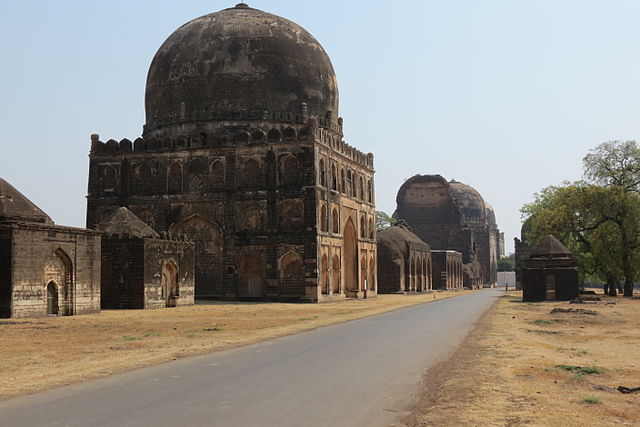
The evolution of Indo-Islamic architecture in the Indian subcontinent is a remarkable journey that spans several centuries and reflects the fusion of Islamic and indigenous architectural styles. This evolution can be divided into distinct periods, each marked by unique features and influences.
Early Islamic Rule (7th-12th century): The first architectural influences of Islam in the Indian subcontinent were seen in the early Islamic conquests. During the Umayyad and Abbasid caliphates, several mosques and tombs were built in regions like Sindh and Gujarat, often using local materials and techniques. These structures were simple in design, with elements such as squinches and domes.
Ghaznavid and Ghurid Dynasties (10th-12th century): The Ghaznavid and Ghurid dynasties introduced the Persian architectural influence to the region. The Qutb Complex in Delhi, started by Qutb-ud-din Aibak, showcases early examples of Indo-Islamic architecture, featuring intricate calligraphy and geometric designs.
The Delhi Sultanate (12th-16th century): This period marked the rise of significant Islamic architecture. The Slave Dynasty, Khalji Dynasty, Tughlaq Dynasty, and the Lodhi Dynasty contributed to the development of Indo-Islamic architecture. Prominent structures from this era include the Qutb Minar, Alai Darwaza, and the massive Tughlaqabad Fort.
The Mughal Era (16th-19th century): The Mughal dynasty, beginning with Babur, brought about a golden age of Indo-Islamic architecture. Notable architectural marvels include the Taj Mahal, Fatehpur Sikri, Red Fort, and Humayun's Tomb. Mughal architecture combined Persian influences with Indian aesthetics, characterized by grand domes, intricate marble work, and symmetrical gardens.
The Deccan Sultanates (14th-17th century): In the Deccan region, various sultanates like the Bahmanis and the Qutb Shahis created their unique architectural styles. The Gol Gumbaz in Bijapur, known for its massive dome and whispering gallery, is a prime example.
The Indo-Islamic Vernacular (14th-19th century): During this period, regional architectural styles emerged, influenced by Islamic design principles. The architecture of Kashmir, Bengal, and Gujarat, for example, featured unique wooden and brickwork, often adorned with intricate carvings.
The Mughal Decline and Later Period (18th-19th century): With the decline of the Mughal Empire, Indo-Islamic architecture saw a shift. Structures like the Bara Imambara in Lucknow and the Badshahi Mosque in Lahore showcased a blend of Mughal and local architectural elements.
Colonial Influence (19th-20th century): Under British colonial rule, new architectural styles began to emerge. The blend of European and Indo-Islamic styles can be seen in structures like the Victoria Memorial in Kolkata and various railway stations.
Post-Independence (20th century-present): Post-independence, India continued to build structures influenced by Islamic architecture. The architecture of the Jamia Millia Islamia in Delhi, for example, incorporates elements from the past while embracing modern design.
Throughout its evolution, Indo-Islamic architecture integrated elements such as arches, domes, minarets, calligraphy, and geometric patterns into its designs. It also embraced local materials and techniques, resulting in regional variations.
In conclusion, Indo-Islamic architecture in the Indian subcontinent is a testament to the rich cultural and historical heritage of the region. It reflects the continuous exchange of ideas and artistic expressions between different cultures, resulting in a diverse and visually stunning architectural legacy that continues to captivate the world.
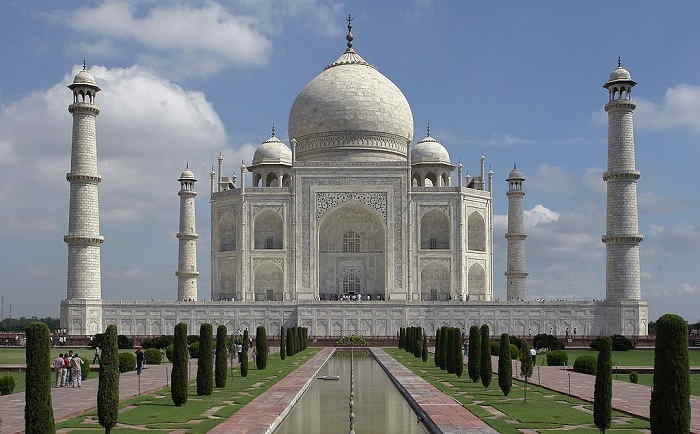
Indo-Islamic architecture is renowned for its stunning monuments and structures that reflect the fusion of Islamic design principles with Indian craftsmanship and aesthetics. Here, we explore some of the most prominent buildings belonging to this architectural style in the Indian subcontinent.
Taj Mahal, Agra: Undoubtedly the most famous example of Indo-Islamic architecture, the Taj Mahal was built by Emperor Shah Jahan in memory of his beloved wife Mumtaz Mahal. This white marble mausoleum is known for its symmetrical design, intricate calligraphy, and the stunning use of precious and semi-precious stones inlays.
Qutb Minar, Delhi: Built during the Delhi Sultanate, the Qutb Minar is a 73-meter-high tower made of red sandstone and marble. It's a UNESCO World Heritage Site and is surrounded by other historical structures, including the Quwwat-ul-Islam Mosque and the Iron Pillar.
Red Fort, Delhi: Constructed by Shah Jahan, the Red Fort (Lal Qila) is a colossal fort complex made of red sandstone. It's an excellent example of Mughal architecture, featuring ornate white marble palaces, beautiful gardens, and the famous Diwan-i-Am and Diwan-i-Khas.
Humayun's Tomb, Delhi: This tomb of Emperor Humayun is considered a precursor to the Taj Mahal. Its splendid Mughal architecture includes a garden divided into four quadrants and a stunning central octagonal tomb with a dome.
Fatehpur Sikri, Uttar Pradesh: Built by Emperor Akbar, Fatehpur Sikri is a UNESCO World Heritage Site that showcases both Mughal and Indo-Islamic architectural elements. The complex includes structures like the Buland Darwaza, Jama Masjid, and the royal palaces.
Gol Gumbaz, Bijapur: Located in Karnataka, Gol Gumbaz is a mausoleum famous for its massive dome, which is one of the largest unsupported domes globally. It also features a unique whispering gallery that allows sounds to travel across the dome's interior.
Badshahi Mosque, Lahore: Commissioned by Emperor Aurangzeb, this mosque is a masterpiece of Mughal architecture. Its grand courtyard can accommodate thousands of worshippers, and the red sandstone structure is known for its stunning beauty.
Charminar, Hyderabad: This iconic monument was built by Muhammad Quli Qutb Shah in 1591. Its four grand arches support the central mosque, and it's known for its intricate stucco work.
Jama Masjid, Delhi: Completed in 1656, the Jama Masjid in Old Delhi is one of the largest mosques in India. It features a vast courtyard, three domineering gateways, and stunning red sandstone and white marble architecture
Sidi Saiyyed Mosque, Ahmedabad: Known for its iconic "Tree of Life" Jali (lattice) window, this mosque is a prime example of Indo-Islamic architecture. The delicate stone tracery is a marvel of craftsmanship.
Bada Imambara, Lucknow: This colossal structure was built by Nawab Asaf-ud-Daula during the 18th century. It includes the Bara Imambara, the Bhulbhulaiya (labyrinth), and the Rumi Darwaza.
Jaisalmer Fort, Rajasthan: Often referred to as the "Golden Fort" due to its yellow sandstone construction, Jaisalmer Fort is a prime example of Rajasthani Indo-Islamic architecture. It houses palaces, temples, and residential complexes.
Safdarjung's Tomb, Delhi: This garden tomb was built in the late Mughal architectural style. It's known for its stunning garden layout and the red and brown sandstone mausoleum.
Champaner-Pavagadh Archaeological Park, Gujarat: This UNESCO World Heritage Site features a mix of Islamic and Hindu architecture, including mosques, stepwells, tombs, and fortifications.
These iconic buildings not only showcase the architectural brilliance of the time but also provide valuable historical insights into the rich cultural heritage of the Indian subcontinent. Each structure is a testament to the harmonious blending of Islamic and Indian architectural traditions, resulting in a unique and visually stunning legacy.